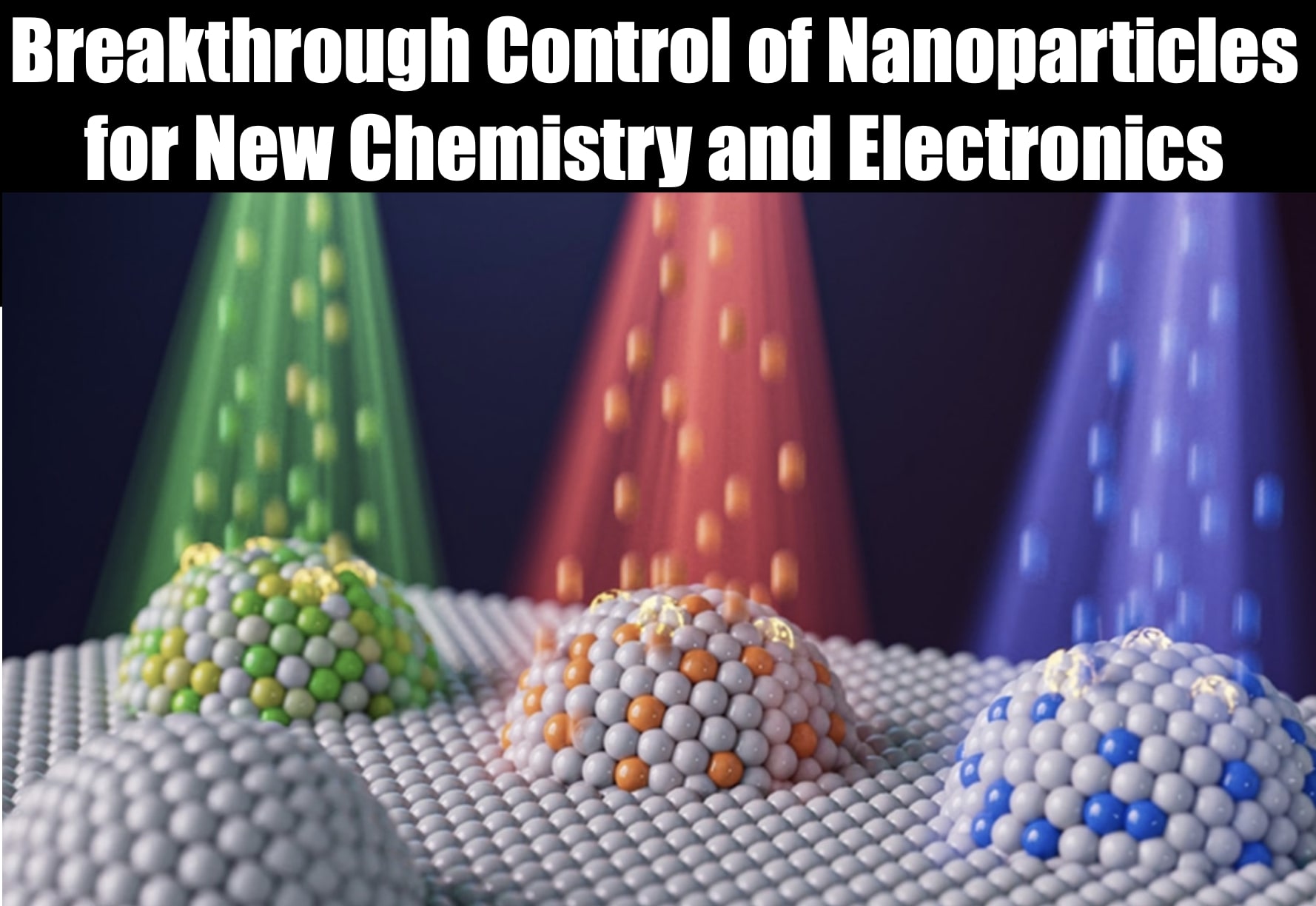Nano-engineered oxides are very important for the development of next-generation catalysts and microelectronics. Recently, metal exsolution from oxides has emerged as a promising nano-structuring tool to fabricate nanoparticle-decorated oxides. However, controlling the size, density, composition, and location of exsolved nanoparticles remains a challenge, limiting the ultimate performance achievable by these nanostructures.
The following nanoparticle production control was achieved:
1. ion sputtering can controllably reduce the size of surface exsolved nanoparticles down to 2 nm, which are among the smallest values reported in the literature thus far.
2. implanted metal ions can tailor the composition of nanoparticles exsolved both at the surface and in the bulk, providing a convenient and direct way to synthesize exsolved nanoparticles with alloyed compositions.
3. irradiation-induced lattice defects can catalyze the nucleation of nanoparticles, and this enables controlling the density and location of exsolved nanoparticles at specific sample locations using ion irradiation
MIT Researchers worked with the Brookhaven National Lab to perform this work. The work demonstrates control over key properties leading to better performance. Fuel and electrolysis cells both involve electrochemical reactions through three principal parts: two electrodes (a cathode and anode) separated by an electrolyte. The difference between the two cells is that the reactions involved run in reverse. The electrodes are coated with catalysts, or materials that make the reactions involved go faster. But a critical catalyst made of metal-oxide materials has been limited by challenges including low durability. This works has improved the critical fuel cell catalyst. Metallic nanoparticles serve as catalysts in many, many reactions, including the important reaction of splitting water to generate hydrogen for energy storage.
MIT researchers present ion irradiation as a general platform to allow control over these parameters during metal nanoparticle exsolution, by simultaneous sputtering, implantation, and defect generation mechanisms. Using thin-film perovskite and binary oxides as model systems, they showed ion beams can controllably reduce the size of exsolved nanoparticles down to 2 nm through ion sputtering. They tailored the exsolved nanoparticle composition from unitary metal to metal alloy via ion implantation. Furthermore, irradiation creates point defects and defect clusters, which serve as nucleation sites for metal exsolution. By leveraging this process, we tuned the density and spatial distribution of exsolved nanoparticles. Finally, they demonstrated that nanocatalysts prepared by irradiation-assisted exsolution exhibit superior catalytic activity toward water-splitting reactions than those produced using conventional exsolution methods. These findings highlight the potential of ion irradiation for engineering nanoparticle exsolution in diverse materials systems, with broad implications for electrochemical and electronic applications.
Developing advanced methods to synthesize stable, active, and cost-efficient nanomaterials is critical to modern technologies. A recent advance in this regard is to prepare nanostructured oxides in a phase precipitation process termed “exsolution”. In exsolution, the to-be-exsolved metal cations are first dissolved in the host oxide as dopants, forming a metal oxide solid solution. Then, upon a single-step reductive or oxidative treatment, metal cations phase precipitate out of the host oxides as well-dispersed metal nanoparticles. Due to the simple processing and broad applications, exsolution has powered advances in the performance of electrochemical and electronic devices. For example, by exsolving nanoparticles on the oxide surface, researchers have prepared nanocatalysts with exceptional (electro)chemical stability and self-regeneration capabilities for clean energy and fuel conversion. By exsolving nanoparticles in the bulk of oxides, self-assembled oxide nanocomposites with unique transport, redox, and magnetic properties were achieved for next-generation electrochemical and electronic devices.
With the promising applications described above, there is substantial motivation in the field to gain better control over exsolution to realize its full potential. Today’s nanoparticle exsolution often results in unitary metal particles of 10s nm size. Since ultrafine and multi-element nanoparticles can have higher catalytic activities, it is desirable to exsolve nanoparticles with tunable composition (multi-component) and with tunable (reduced) size. Researchers have tried various methods, such as doping, plasma treatment and electrochemistry.





Brian Wang is a Futurist Thought Leader and a popular Science blogger with 1 million readers per month. His blog Nextbigfuture.com is ranked #1 Science News Blog. It covers many disruptive technology and trends including Space, Robotics, Artificial Intelligence, Medicine, Anti-aging Biotechnology, and Nanotechnology.
Known for identifying cutting edge technologies, he is currently a Co-Founder of a startup and fundraiser for high potential early-stage companies. He is the Head of Research for Allocations for deep technology investments and an Angel Investor at Space Angels.
A frequent speaker at corporations, he has been a TEDx speaker, a Singularity University speaker and guest at numerous interviews for radio and podcasts. He is open to public speaking and advising engagements.

